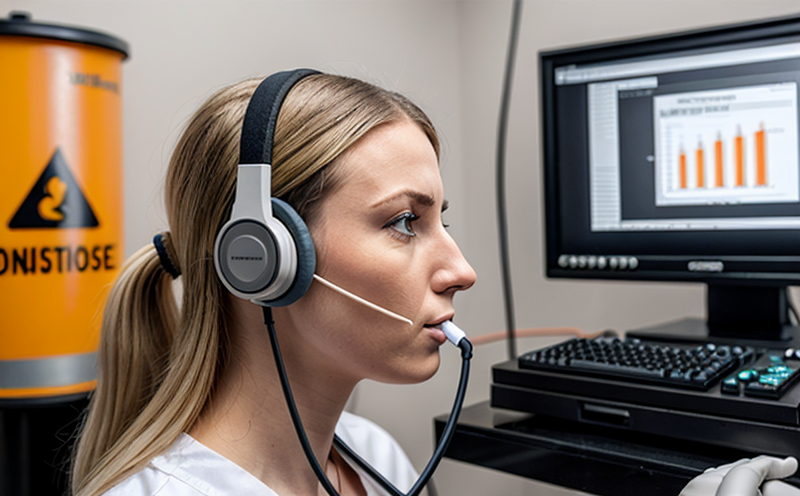ISO 9614-2 Sound Power Determination by Sound Intensity Measurement
The ISO 9614-2 standard provides a method to determine sound power levels from measured sound intensity values. This technique is widely used in the acoustics, vibration, and noise testing sector for assessing occupational noise exposure and evaluating the effectiveness of hearing protection devices.
Occupational noise exposure is a significant concern in many industries where employees are exposed to high noise levels over extended periods. Prolonged exposure can lead to permanent hearing loss and other health issues. The ISO 9614-2 method offers an accurate and reliable way to quantify the sound power level, which is critical for ensuring compliance with occupational health and safety regulations.
Sound power determination by sound intensity measurement involves measuring the sound pressure and particle velocity in a controlled environment using two or more pairs of sensors. The sound intensity is then calculated based on these measurements, and this value is used to determine the sound power level according to ISO 9614-2 guidelines.
The standard specifies procedures for conducting tests under free-field conditions, which are essential for obtaining accurate sound power levels. This method ensures that the test environment does not introduce significant reflections or diffractions that could affect the measurement accuracy.
For quality managers and compliance officers, this service provides a robust tool to assess workplace noise exposure. For R&D engineers, it offers insights into the performance of new hearing protection devices. And for procurement professionals, it ensures the selection of appropriate protective equipment based on accurate sound power levels.
The ISO 9614-2 method is particularly useful in environments with complex acoustic characteristics, such as industrial facilities, construction sites, and manufacturing plants. It allows for precise measurement even when there are multiple noise sources or reflections present.
By using this method, organizations can ensure that they meet the requirements of relevant occupational health and safety standards, including OSHA (Occupational Safety and Health Administration) in the United States, and similar bodies worldwide.
The accuracy of sound power determination is crucial for effective noise control strategies. By understanding the specific sound power levels in different environments, employers can implement targeted interventions to reduce noise exposure effectively. This not only protects employees' health but also enhances workplace safety and productivity.
Applied Standards
| Standard | Description |
|---|---|
| ISO 9614-2 | Determination of sound power levels from measured sound intensity values using two or more pairs of sensors. |
| EN ISO 3745 | Measurement of sound pressure in the frequency range up to 50 kHz. |
| ASTM E918 | Determination of sound power levels by comparison with reference levels. |
Why Choose This Test
- Accurate measurement of sound power in complex acoustic environments.
- Compliance with international standards for occupational noise exposure assessment.
- Precise evaluation of the effectiveness of hearing protection devices.
- Supports evidence-based decision-making for noise control strategies.
- Avoids potential inaccuracies associated with other measurement techniques.
Quality and Reliability Assurance
The ISO 9614-2 method is highly regarded for its reliability and accuracy in measuring sound power levels. The technique relies on precise sensor placement, careful calibration of instruments, and adherence to standardized procedures.
To ensure the highest quality results, our laboratory follows a rigorous quality control process that includes regular calibration of equipment, validation of measurement techniques, and review of test protocols. Our team of experts ensures that all tests are conducted in accordance with international standards, providing clients with confidence in the accuracy and reliability of their noise exposure assessments.
The use of advanced instrumentation, such as sound intensity probes and high-precision microphones, further enhances the precision of our measurements. This allows us to provide detailed reports that not only meet regulatory requirements but also offer valuable insights for continuous improvement in workplace safety and health.





